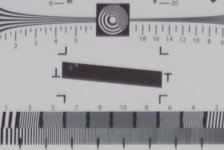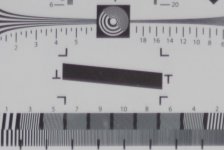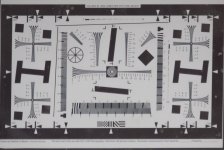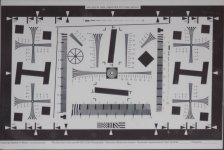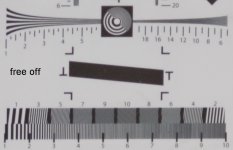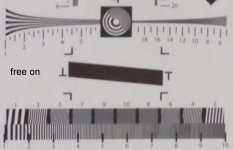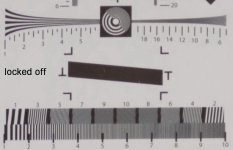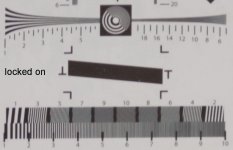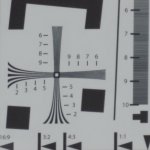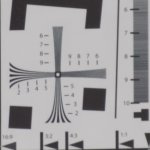IS-1 on the E-30 is vertical and horizontal stabilization. I set the IS to 600mm.
More testing using a slightly different method. I have been using an ISO 12233 chart. In the lower left corner is a cross type resolution scale. Because IS is supposed to take care of both vertical and horizontal movement, it stands to reason that there would be differences in the resolution depending on which way the lens moves. That is, if there is vertical movement, the vertical scale will be better than the horizontal scale. So here is what I did.
I took groups of 10 shots at different ISO settings and with IS-1 on and off, with the crossed scale in the center of the frame. Then I averaged out the resolution of the v and h scales of each shot. Say a shot was clear at 10 on one axis but only clear up to 8 on the other, I gave it a 9. This made evaluating the shots much less subjective. Then I added up the total points and divided by 10.
In general the average came out about half a point better without IS off (around 7.5 to 8), BUT, there was a much larger range. With IS off I was getting a mix of 6s to 10s, whereas with it on I was getting 7s to 9s. So even though the averages were not all that much different, the only really clear shots were with IS off, at the expense of more really bad ones. IS on was more even, but none as good as the best with IS off.
At ISO 1600 there is no point in testing because the noise in the sensor completely kills the resolution. 800 was OK, 400 pretty good and 200 best, but naturally with more bad ones the lower the ISO goes.
I am more convinced than ever that high ISO is the way to go, although the IS on the OM-D is supposed to be much better. Give Carlos (cango) something to do in his spare time.





